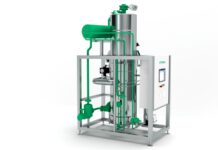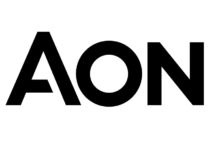The sophistication of clinical trial management continues to advance at an unprecedented pace, and nowhere is this transformation more evident than in clinical packaging and labeling solutions. As trials become increasingly global, complex, and patient-centric, packaging has evolved from a simple container to a strategic operational tool. Modern clinical packaging innovations are redefining how study materials reach patients, how compliance is maintained, and how efficiency is achieved across multinational trial programs.
The Global Challenge: Why Clinical Packaging Matters
Complexity of Global Operations
Clinical trials have become truly global enterprises, with sites spanning multiple continents, each operating under distinct regulatory regimes, speaking different languages, and serving patient populations with unique needs. A single clinical trial program might simultaneously operate in North America, Europe, Asia-Pacific, Latin America, and the Middle East. Each region presents its own set of regulatory requirements, linguistic needs, and operational considerations that make one-size-fits-all packaging solutions impossible.
The stakes of clinical packaging are high. Improperly labeled or non-compliant packaging can lead to protocol deviations, adverse events, regulatory inspections, or complete trial halts. Conversely, over-engineered packaging solutions drive costs and timelines, consuming resources better spent on scientific objectives. The innovation imperative in clinical packaging is therefore not about adding features but about creating intelligent solutions that deliver maximum compliance value with minimal operational friction.
Historical Context and Evolution
Historically, clinical packaging operated in silos. Sponsors would develop a packaging specification for North America, then adapt it for Europe, then for other regions, often creating multiple distinct package configurations for the same trial. This fragmented approach resulted in complexity, delays, and opportunities for errors. The packaging industry has fundamentally reimagined this model, developing integrated solutions that maintain scientific and regulatory integrity while accommodating global diversity.
Multi-Language Labeling: Beyond Translation
Intelligent Label Design
Clinical packaging innovations have moved far beyond simple translation of labels into multiple languages. Modern multi-language labeling represents a sophisticated integration of linguistic expertise, regulatory knowledge, and human factors engineering. Advanced systems now employ semantic analysis to ensure that translated content maintains not just literal accuracy but regulatory and contextual meaning across languages and cultures.
Multilingual clinical labeling systems must account for regulatory requirements that vary significantly across jurisdictions. European regulations may require specific information in particular sections of the label, while North American requirements follow different organizational logic. Asian markets may have additional requirements around character sizes or format standards. Innovative packaging solutions now integrate these varied requirements into unified label designs that satisfy all regulatory domains simultaneously.
Color coding and iconography represent another dimension of intelligent multi-language design. Rather than relying solely on text, modern clinical packages employ consistent color schemes and standardized icons that communicate critical information without linguistic barriers. A red border might consistently indicate a critical safety instruction, while standardized pictograms communicate handling requirements. This layered approach to information design ensures that even sites or patients unfamiliar with written instructions can intuit critical safety messages.
Dynamic Content Management
One of the most significant innovations in multi-language labeling is dynamic content management systems that allow single master artwork files to generate compliant labels for multiple markets and languages simultaneously. Rather than maintaining hundreds of separate label files, sponsors can now work with unified systems that automatically apply region-specific requirements, language variants, and regulatory updates. When regulatory information changes in one market, these systems can rapidly propagate compliant updates across all affected labels.
This technological approach dramatically reduces the timeline for implementing changes. When clinical programs need to revise inclusion criteria, adjust dosing instructions, or update safety information, the revision can cascade across all labels within days rather than months. For adaptive trials adding new treatment arms or modifying study populations, this agility is transformative.
Booklet Labels and Complex Information Architecture
Innovative Multi-Page Solutions
For studies requiring extensive patient instruction or complex dosing schemes, booklet-style labels represent a major innovation in clinical packaging. Rather than squeezing information onto limited label space using progressively smaller text, booklet labels provide dedicated pages for safety information, dosing instructions, dietary interactions, and emergency contact information. This architecture dramatically improves readability and comprehension while maintaining a professional presentation.
Booklet labels also enable sophisticated information architecture that guides patients through critical content sequentially. Rather than presenting all information equally, booklet designs prioritize safety-critical information on the first pages, followed by operational instructions, and concluding with supplementary information. This hierarchy reflects how patients actually use instructions, improving both compliance and safety outcomes.
Integration with Patient Support Programs
Innovative clinical packaging solutions now integrate booklet labels with patient support materials, creating a comprehensive information ecosystem. A booklet label might include a QR code linking to video instructions for reconstitution or administration, interactive digital forms for documenting usage, or real-time connectivity to clinical trial support teams. This integration transforms the package from a passive container into an active conduit for patient engagement and support.
The pharmaceutical industry is increasingly recognizing that booklet-style clinical packaging supports better patient outcomes. Studies consistently demonstrate that patients who receive comprehensive written instructions alongside video guidance and interactive support demonstrate significantly higher compliance rates. As clinical trials increasingly include diverse patient populations, some with limited health literacy, these sophisticated packaging innovations become essential tools for ensuring equitable trial participation.
Just-in-Time Packaging: Supply Chain Flexibility
Operational Model Transformation
Just-in-time (JIT) packaging represents perhaps the most transformative innovation in clinical supply management. Rather than manufacturing, labeling, and storing complete kits months in advance of their use, JIT models postpone final assembly and labeling until materials are actually deployed to sites. Bulk drug product and components are stored centrally, and only when a site requests supplies are final kits assembled, labeled in appropriate languages, and shipped directly to the destination.
The logistical implications of JIT packaging are profound. Traditional approaches typically require 50-200% overage to account for forecast uncertainty and account for normal wastage. JIT reduces overage to 10-20% by aligning production precisely with actual demand. For expensive biologics, orphan disease treatments, or limited-supply drugs, this efficiency translates directly into cost savings and better resource utilization across trial portfolios.
Protocol Adaptation and Agility
For adaptive trials, JIT packaging is transformative. When a new arm is added to a platform trial, materials can be configured and shipped within weeks. When randomization ratios shift to favor more promising treatments, supply can immediately adjust. When patient populations are refined based on interim data, packaging can be reconfigured accordingly. This operational flexibility enables sponsors to realize the full potential of adaptive trial designs without being constrained by supply chain limitations.
The timeline acceleration enabled by JIT packaging compounds across a trial program. By compressing each protocol modification cycle from three months to three weeks, sponsors can implement adaptive changes rapidly enough to meaningfully accelerate overall development programs. For conditions where rapid iteration might improve outcomes, this acceleration translates directly into patient benefit.
Smart Packaging Technologies
Embedded Sensing and Monitoring
Smart packaging represents the frontier of clinical packaging innovation, integrating embedded sensors and communicative technologies into clinical trial containers. Temperature-sensitive labels that change color if products are exposed to out-of-range temperatures have existed for years, but newer smart packaging goes far beyond basic indicators. Embedded sensors can now continuously monitor temperature, humidity, light exposure, and even physical condition, creating detailed records of package handling history.
These embedded sensors communicate with cloud-based platforms through various technologies. RFID tags allow rapid scanning of packages, immediately verifying authenticity and tracking chain of custody. NFC chips enable smartphones to read package information, access digital instructions, and record patient-reported compliance data. These capabilities transform the package from a static container into a dynamic data collection point within the clinical trial ecosystem.
Authentication and Anti-Counterfeiting
Smart packaging technologies also address the critical issue of product authentication and anti-counterfeiting. Pharmaceutical counterfeiting represents a significant global health threat, and clinical trials using experimental products are particularly vulnerable. Advanced packaging solutions now employ sophisticated authentication technologies including holographic security features, microprinting, encoded track-and-trace systems, and blockchain-based verification. These technologies ensure that only genuine clinical trial materials reach study sites and patients.
For global trials operating in regions with known counterfeiting issues, smart authentication packaging provides regulatory confidence and patient protection. Sites can verify package authenticity before administration, creating an immutable record of authentic product usage. This capability is particularly important for studies enrolling vulnerable populations or deploying supply through less-controlled distribution channels.
Real-Time Visibility and Inventory Management
Smart packaging enables unprecedented visibility throughout the supply chain. Rather than wondering whether a shipment has reached a site or stored properly in inventory, sponsors and contract research organizations can track packages in real-time from manufacture through administration to patients. Sensor data provides continuous confirmation that products are maintained within required conditions, generating regulatory documentation automatically.
This real-time visibility feeds into adaptive supply management algorithms. When smart packaging data shows that sites in certain regions consistently use materials faster than expected, inventory planning algorithms adjust accordingly. When sensors indicate that materials in certain locations experience temperature excursions, alternative supply routes or packaging configurations can be implemented. This data-driven supply management represents the next evolution of clinical supply chain optimization.
CTM Solutions for Complex Trial Designs
Integrated Clinical Trial Material Management
Modern clinical trial material (CTM) solutions integrate packaging innovation with comprehensive material management platforms. These systems track CTM from manufacture through sites through final patient administration, maintaining complete audit trails for regulatory compliance. For complex trials with multiple arms, multiple dosing regimens, and multiple sites, integrated CTM solutions provide essential operational control.
Advanced CTM platforms now incorporate artificial intelligence for predictive inventory management. Rather than relying on simple reorder points, AI systems analyze enrollment patterns, site usage history, seasonal factors, and competitive trial activity to anticipate supply needs proactively. These systems can flag potential shortages weeks in advance, allowing sponsors time to implement mitigation strategies. For trials operating under tight timelines, this predictive capability prevents delays that could derail study momentum.
Regulatory Documentation and Compliance
CTM solutions have revolutionized regulatory documentation. Rather than manually compiling packaging records, label approvals, stability data, and manufacturing documentation for regulatory submissions, modern systems generate comprehensive CTM regulatory dossiers automatically. Every aspect of packaging design, manufacturing, testing, and handling generates electronic records that flow directly into regulatory documentation.
This digital record-keeping streamlines inspections and regulatory interactions. When inspectors request documentation of how packaging decisions were made, systems can immediately generate detailed records showing all decisions, approvals, and scientific rationale. This transparency and traceability accelerates regulatory interactions and demonstrates the rigor that modern clinical sponsors bring to packaging management.
Global Regulatory Harmonization and Adaptive Strategies
Market-Specific Requirements
Despite global harmonization efforts, clinical packaging still must navigate distinct regulatory requirements across major markets. The FDA has specific requirements around package inserts and labeling format. The EMA specifies different requirements, particularly regarding certain safety information and language specifications. Regulatory agencies in Asia, Latin America, and other regions each bring additional specific requirements. Modern packaging innovation must navigate this complex regulatory landscape while maintaining operational efficiency.
Innovative sponsors are taking a different approach to this complexity. Rather than developing separate package configurations for each market, they identify common elements that can satisfy multiple regulatory regimes simultaneously, then develop targeted modifications that address region-specific requirements. This strategic approach reduces the proliferation of distinct package configurations while maintaining full regulatory compliance.
Advance Regulatory Engagement
Leading organizations now engage regulatory agencies early in packaging development, presenting proposed designs for feedback before finalizing artwork. This pre-submission strategy prevents costly rework and accelerates regulatory approval timelines. For adaptive trials where packaging modifications might be necessary, establishing relationships with regulatory consultants in key markets enables rapid execution of packaging changes when protocol modifications are needed.
Environmental and Sustainability Considerations
Evolving Industry Standards
Clinical packaging innovation is increasingly addressing environmental sustainability. The pharmaceutical industry faces growing regulatory and stakeholder pressure to reduce its environmental footprint, and clinical packaging represents a significant opportunity. Modern innovations are introducing recyclable and compostable packaging materials that maintain the protective and informational functions of traditional packaging while reducing environmental impact.
Manufacturers are developing secondary packaging using recycled materials and minimizing unnecessary components. Some organizations are moving away from individual package inserts in favor of digital content accessible through QR codes, reducing paper waste. These sustainability innovations typically also reduce costs and environmental footprint simultaneously, creating compelling business cases.
Conclusion
Clinical packaging innovations represent far more than incremental improvements in container design or label formatting. They represent a fundamental reimagining of the package as a strategic operational tool that enhances trial efficiency, patient safety, regulatory compliance, and environmental sustainability simultaneously. From intelligent multi-language labeling systems through real-time monitoring and smart packaging technologies to integrated clinical trial material management platforms, modern innovations are transforming clinical supply chains.
For sponsors conducting global trials, particularly those employing adaptive designs, clinical packaging innovations offer essential capabilities for navigating complexity while maintaining efficiency and compliance. Organizations that successfully integrate advanced packaging solutions into their clinical operations gain significant competitive advantages through accelerated timelines, reduced costs, and improved trial execution.
As clinical research continues advancing toward more sophisticated designs and more global operations, packaging innovation will remain a critical enabler of development success. The future of clinical trials is inextricably linked to the evolution of intelligent, adaptive, and patient-centric packaging solutions.




















